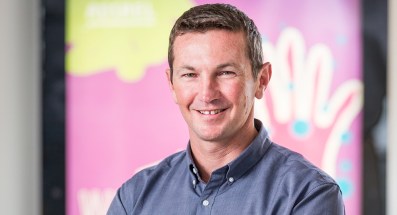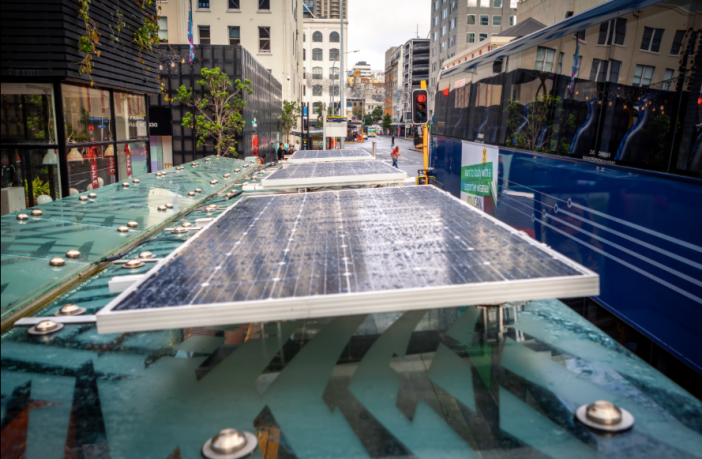Leading New Zealand in out of home advertising, oOh!media are always looking at ways to improve. With a strong belief of eco practices, the company’s current mission is to deliver greater sustainability and reduce its environmental impact. Here, we talk to general manager Nick Vile about the practices oOh!media is adopting in order for a green future in the communities in which it operates.
oOh!media’s low carbon activities have a flow on effect across all of its programmes, initiatives and networks. Recently partnering with Meridian Energy, the advertising company is now a certified customer and is using renewable energy across its advertising network and depot.
In terms or broader sustainability, Vile says oOh!media’s street furniture has been designed to last 20 years, and the team maintain the network free of charge to local councils. Regular maintenance using water and low pressure systems enables the shelters to live past their 20 year mark and helps reduce the carbon footprint.

“These assets are an integral part of New Zealand’s public transport Infrastructure, which itself contributes to the reduction of vehicle pollution in a country where 19 percent of greenhouse gas emissions come from road transport.”
Recyclable synthetic papers, waste segregation and recycling are also among the initiatives for the company’s greater sustainability.
Dedicated to keeping communities clean, safe and beautiful, oOh!media has been actively supporting the not-for-profit organisation Keep NZ Beautiful.
“The oOh! team is actively involved to cleaning up our community. Last year the entire Auckland office staff got involved in their local area, and we also supported KNZB with free ad space for its ‘Every litter bit counts’ campaign.”
One of the major global challenges today is energy consumption, which Out of Home advertising is prone to using. Despite the challenges presented by Covid-19, oOh!media has recently implemented multiple energy-saving alternatives to its street furniture to reduce power usage.
In Auckland alone, the company has upgraded 550 sites to LED within the last four years, which has resulted in an 85 percent reduction in power usage. 50 percent of its light boxes are also now lit by low energy LED ligths.
Similarly, oOh!media’s street furniture automatically adjusts to ambient levels to save power and process is underway for solar powered bus shelters.

“The roll out of all these initiatives are still on track, despite the challenges presented by Covid-19. We will continue implementing these programs while also supporting brands by helping them reach their target audiences as they continue to recover economically.
“On a broader note, it’s great to be living in a country where so much effort is being put into sustainability on a national level.”
In terms of larger experimental campaigns, Vile says as a company, oOh!media wants to promote sustainability from design to production, and says clients are becoming increasingly conscious about this also.
“We’re always very conscious of creating installations that won’t litter the vicinity. We don’t want samples or pamphlets that may blow around in the wind, for instance. Each execution has to be well considered for the environment it is placed in.”
When comparing digital to print for financial sustainability, Vile says both have their advantages, but well-allocated assets backed by smart planning will generally always do well.
“Digital enables us to give multiple advertisers the opportunity to advertise on assets at any given time, and for us increases revenue opportunities.
Print is great for owning a space, especially a big, prominent one that gives a brand 100 percent share of voice, and generates ongoing revenues through longer term bookings.”
For clients, he says the company is witnessing high demand for digital assets due to the flexibility it provides both in terms of creativity and booking at short notice.
Vile adds that classic infrastructure is however less expensive to maintain and run than digital assets, and has all the strengths it’s always had. He says balance is key and people are increasingly finding the best ways to use each type.
Following a 72 percent fall in Q2 due to Covid-19, oOh!media has still maintained its sustainable focus, which Vile says was down to adaption and data.
“Covid-19 has presented a real challenge to our industry, but an unexpected pandemic will not undermine its underlying core strength.
Out of Home is on a lengthy upward trend, as it’s a highly effective way of reaching large numbers of people at a time when broadcast and digital audiences are fragmenting.”
The industry has also started to invest more into sophisticated data and analysis techniques, to deliver effective and highly targeted campaigns at a great scale.
Recent data from oOh!media’s street furniture network shows a weekly national reach of around 90 percent pre-covid levels. CBD reach in Auckland and Wellington has reached 90 and 79 percent and the surrounding suburbs have done even better with a 95 percent reach in Auckland’s and an 88 percent reach in Wellington’s.
Vile says the trend will continue and add further value to the industry, which underpins future growth.
“The Out of Home industry is sustainable and will regain ground as conditions continue to ease.”
The post Sustainability is King: oOh!media takes us through the power of a sustainable focus appeared first on stoppress.co.nz.
More Stories
EXCLUSIVE: NBA Chief DEI Officer Lesley Slaton Brown to Exit in June
Here are the Cable News Ratings for March 2025
As Economic Challenges Persist, Your Brand Can Still Innovate